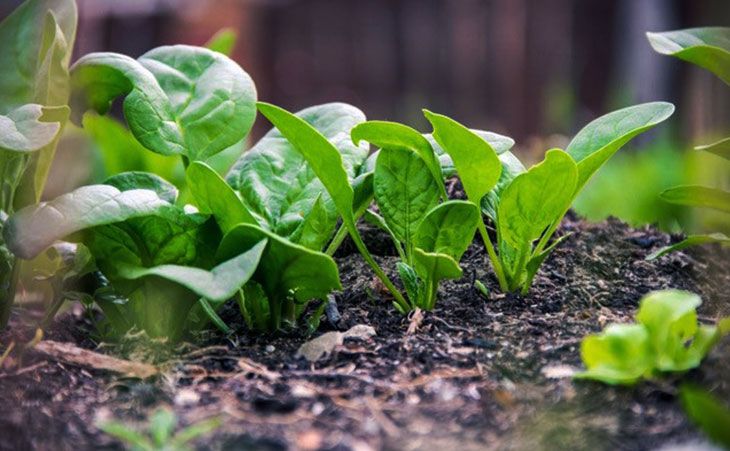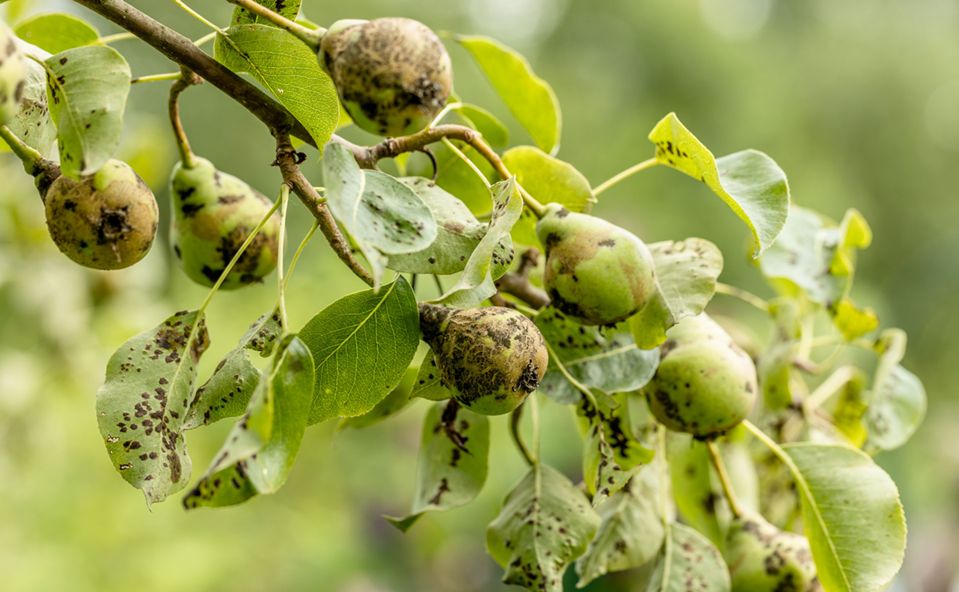Preventing Problems Before They Begin

Ponder before you plant
Test the soil for nutrients and pH, and have a thorough understanding of your soil type. Good drainage is essentially to staving off rot and fungus, so amend heavy clay soils if need be.
Plants have preferences. Sun-loving trees and plants want to be in the sun; putting them in part-shade will invite moisture problems and result in poor production.
Space plants according to their mature size, not to fill the space immediately. Don’t plant in long, skinny rows; instead, try raised beds or wide rows. Not only will this save space and increase your yields, you’ll discourage traveling pests that prefer open ground to groupings of plants. Remember that proper air circulation is critical to the prevention of fungus and rot, so don’t plant too tightly.
Garden intelligently
Plant pest- and disease-resistant varieties to begin with. Perhaps the easiest — and most obvious preventive measure you can take. Many organic trees are naturally disease-resistant.
Row covers. If the bugs can’t get in, they can’t harm your plants. Invest in some row covers, which allow light and rain to penetrate, but not damaging insects. It isn’t necessary to cover the entire garden; just focus on the things that are most attractive to chewing insects, like squash, cabbage and lettuces. If pollination is important to what you’re growing, remove the covers during the bloom period.
Scout for trouble. Tour your garden every day, inspecting trees (especially fruit trees) and edibles for signs of a problem. Turn over the leaves to look for scale and aphids. Listen for faint clicking sounds on your tomato plants to spot lime-green hornworms. Pick off visible insects and note signs of yellowing or curling leaves, spots, defoliation and mildew, then treat accordingly if necessary. You may not be able to eradicate every problem, but this practice will keep issues from overtaking the garden.
Companion-plant
Plant the right plants together, and watch them team up to keep each other healthy, repel pests, attract beneficial insects, improve flavor and even fix nitrogen in the soil. It’s truly remarkable how smart Mother Nature is! Here are some of the most effective pairings, along with what not to plant together:
- Basil + tomatoes, peppers
- Borage + tomatoes, cabbage, strawberries
- Catnip + squash, cucumbers
- Chamomile + cucumbers, cabbage, onions, broccoli, Brussels sprouts and cauliflower
- Dill + cucumbers, cabbage, lettuce
- Marigolds + anything
- Nasturtiums + cucumbers, cabbage, melon, squash, tomatoes
- Onions/garlic + most anything (see below)
- Radishes + cucumbers
*Do not plant:
- Dill or tomatoes near carrots
- Potatoes, cabbage, cauliflower or corn near tomatoes
- Onions or garlic near asparagus, beans or peas
- Mint near asparagus
- Pole beans or mustard greens near beets
- Cucumber, pumpkin, radish, sunflower, squash or tomatoes near potatoes
- Any member of the cabbage family near strawberries
Sanitation
Pre-season. Check for hidden egg casings, cankers, oozing bark or branches, or other problem signs. Don’t let things fester until it’s too late to do anything.
During the season:
- After each use/cut, sterilize your pruning and digging tools with alcohol or boiling water (don’t use bleach) to prevent the spread of any pathogens.
- If watering becomes necessary, water the ground — not the leaves. A drip-irrigation system is ideal. Keep your soil mulched, which not only helps retain water but prevents soil-borne diseases from being splashed onto plants during heavy rain.
- Employ sticky traps to catch aphids, whiteflies, fruit flies, gnats, and other disease-carrying garden pests. Boil equal parts corn syrup and water, let cool, and paint strips of cardboard or heavy paper. Hang them up or put them in a shoebox with a small hole cut out as close as you can to the ground. You’ll trap a surprising amount of bugs that would otherwise be eating your plants.
- Buy a bat house. Bats eat bugs by the thousands. Also install bird feeders and bird houses to encourage them to inhabit your yard, as they will consume huge numbers of insects. If you have introduced beneficial insects to your garden, spray the plants with garlic to keep the birds and bats from eating your “helpers.”
Post-season. Perhaps the most effective thing you can do to avoid inadvertently hosting unwanted insects and diseases is to keep your garden clean. At the end of each gardening season, gather and compost any garden debris, leaves and weeds that could serve as an incubator during the cold months. Remove dead/diseased branches and plants as soon as you know they are damaged or dead. Do not compost debris from diseased trees or plants.
Photo is courtesy of the Southern Foodways Alliance.
Shop Organic Trees & Plants

 This item is USDA certifield organic
This variety is compatible with your location
This item is USDA certifield organic
This variety is compatible with your location

 This item is USDA certifield organic
This variety is compatible with your location
This item is USDA certifield organic
This variety is compatible with your location

 This item is USDA certifield organic
This variety is compatible with your location
This item is USDA certifield organic
This variety is compatible with your location

 This item is USDA certifield organic
This variety is compatible with your location
This item is USDA certifield organic
This variety is compatible with your location




